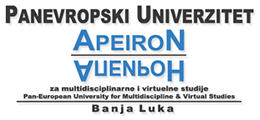 Mechanical Properties of Filament Wound Pipes: Effects of Winding Angles
Mechanical Properties of Filament Wound Pipes: Effects of Winding Angles
Quality of Life (Banja Luka) 6(1-2): 10-15
MECHANICAL PROPERTIES OF FILAMENT WOUND PIPES: EFFECTS OF WINDING ANGLES
SIMONA NASEVA1, VINETA SREBRENKOSKA1,
SVETLANA RISTESKA2, MAJA STEFANOVSKA2, SARA SREBRENKOSKA3
1Vineta Srebrenkoska, Faculty of Technology, University Goce Delchev – Shtip, R.Macedonia, Krste
Misirkov 10-A, Shtip, e-mail: vineta.srebrenkoska@ugd.edu.mk, phone:+38932550901
1Faculty of Technology, University Goce Delchev – Shtip, R. Macedonia, Krste Misirkov 10-A, Shtip
2Institute for Advanced Composites and Robotics, Prilep, R. Macedonia, Krusevski pat bb, 7500 Prilep, e-mail: svetlanar@iacr.edu.mk
3Faculty of Technology and Metallurgy, Ss.Cyril & Methodius University, Skopje, R. Macedonia, Ruger
Boskovic 16, 1000 Skopje, e-mail: ssrebrenkoska@gmail.com
Abstract: The aim of this study is to investigate the mechanical properties of continuous glass fiber reinforced composite tubes produced by filament winding technique with three different winding angles. With help of split-disk tests hoop tensile properties of selected specimens were determined, where reliable results were obtained with low standard deviations. It was observed that bigger winding angle lead to higher hoop tensile properties of filament wound tubular samples.
Also, the effect of reinforcement direction on the mechanical performances of these composites has been presented. Fiber fracture and fiber-matrix debonding is observed to be the dominant failure mechanisms by samples winded with bigger winding angles, whereas delamination in addition to these mechanisms is detected by samples with smaller winding angles. From received results it is concluded that, mechanical properties of composite specimens are depended from winding angles in filament winding technology.
With help of conducted SEM analysis good merger between glass fibers and the epoxy matrix was seen, but cracks within plies and broken fiber were noticed, due to the high fiber branching.
Keywords: filament winding, split-disk test, composite pipes.
| Attachment | Size |
|---|---|
| QOL - Vol 6 Issue 1-2-Simona Naseva.pdf | 1.26 MB |
